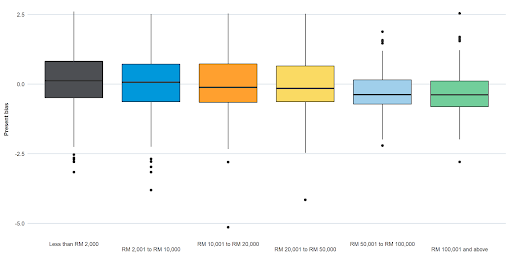We have a reciprocity bias: if you help, I am more likely to help. What happens if you don’t help? What happens if nobody helps? We face a “collective action problem” – which incidentally may sound very familiar to those who have been thinking a lot about fighting climate change.
One of the mechanisms for encouraging cooperation in groups is punishment: if an individual does not pull their weight, then the group may punish that individual. This kind of “pro-social punishment” is so intuitive as to seem inherent to how groups of human beings function.
In a cooperation game tested in two Swiss cities and two Russian cities, the Swiss participants pro-socially punished low contributors – but Russian participants punished low contributors and high contributors. This “anti-social punishment” may not match our intuitions of how groups work together. It sparked a similar study across 15 countries where anti-social punishment was observed in around half of the countries, and it has seriously advanced our understanding of how people respond to altruism.
The conclusion is that although we have a bias towards reciprocity, we can learn a lot from how different people, in different places, respond to that bias in practice.
One reason that testing biases and their effects on behaviour in different countries and cultures is important is to understand whether results still hold. The behavioural sciences have been criticised for only looking at people who are WEIRD – Western, Educated, Industrialized, Rich, and Democratic.
That is why we were so excited to partner with PIDM, the government deposit insurance authority in Malaysia, a country that is Asian, educated, (newly) industrialised and democratic – and just on the cusp of becoming a high-income nation. Essentially, Malaysia is both close enough to a WEIRD society but also different enough to generate discussions about the replicability of behavioural trials in other contexts. We wanted to examine the financial behaviours of Malaysians and find out whether these are affected by some classic cognitive biases. Based on what we know from the (often WEIRD) research, we would expect that:
- People who were more present biased would be less likely to exhibit long-term financial behaviours such as saving and insuring;
- People would be strongly influenced by the “default” option when making a choice; and
- People faced with an overly complex choice set may disengage rather than try to select an option.
To learn about how classic findings from behavioural economics would apply in Malaysia, we ran online surveys with a total of over 2000 Malaysians. These surveys focused on reported financial behaviours, and capturing biases through a combination of self-report instruments and experiments. You can find the full reports here, but we wanted to share three findings where our Malaysian sample responded very much in line with expectations around how these biases affect behaviour.
1) Present bias was negatively correlated with saving more and having insurance
We asked people to tell us about their savings habits and insurance coverage, and then we used the Three-option adaptive discount (ToaD) instrument, which presents a series of options to receive money sooner or later. Over several iterations, this instrument calibrates a present bias measure based on reported preferences. We saw that as present bias increases, the level of emergency savings people had decreases – see below:
Distribution of present bias based on emergency savings levels

We saw similar effects on insurance – higher present bias correlated with people being less likely to have insurance. Now, neither of these results should be that surprising to you. However they are a good indication that cognitive biases do correlate with actual financial behaviours, and more to the point, that this is true even for people who are not WEIRD.
2) The “default” option influenced Malaysian people’s choices
The effect of setting the default option in a choice environment is an infamous example of how a seemingly irrelevant factor can influence decision-making. However, many of the classic papers have WEIRD samples. We wanted to see if this would hold true for our Malaysian sample. We entered our respondents into a lottery, and offered to “save” a proportion of their potential winnings at a high interest rate – then let them pick how much to save.
We tested two treatment conditions – one where saving all the winnings was the default option, and one where we “framed” the savings as something tangible – for example, we told respondents “You could treat yourself to a new outfit, a new smartphone, or take the kids for a fantastic day out”. These had no effect on the likelihood of people choosing to “bank” some of their potential windfall, but it did change the amount they saved. In the default treatment group, respondents saved on average RM58 more than the control group, equivalent to around US$14:

3) Increasing choice complexity may lead to disengagement
When we were reviewing the behavioural science literature for our insurance study, we found the evidence on choice overload particularly interesting. Would this cognitive bias explain why young urban Malaysians – generally higher income, financially literate, and with access to providers – might not be insured?
To test this, we ran an experiment: our control group were asked to choose between three insurance options, and for each we showed them annual coverage, annual premium, and costs covered. Others, in our “social” group, saw “star ratings” out of five for each option, which we indicated were based on other users’ ratings. The third “complexity” group were unlucky: we gave them 8 different insurance options, and as well as the coverage, premium and costs covered, we added deductibles and a range of different “additional benefits”.
We were not actually so interested in which option they chose – we wanted to know if they would choose at all. To capture this, we gave them an “I don’t know” button they could press instead of selecting an option. Below are the proportion of people who opted not to answer:

A higher proportion of those faced with a complex choice opted to disengage and not choose at all. This finding is best described as directional only – it is statistically significant in only one of the two pre-specified models we ran, and it does not hold whilst adjusting for multiple comparisons. However we think it is a sign that part of the reason that young urban Malaysians are not getting insured is simply that the act of choosing between all these different options is so off-putting!
Behavioural insights have the potential to be applied far beyond its WEIRD origins, but to do so we need to build from base principles. In these studies we saw that Malaysians’ showed the same present bias, default bias, and aversion to choice overload we have seen previously in WEIRD samples.
Now we have shown the foundation is solid, BIT Singapore are planning more work in Malaysia (and across the region) on applying behavioural insights to help people make better financial choices. If you’re interested in helping us to build the evidence, and use it, please get in touch.





